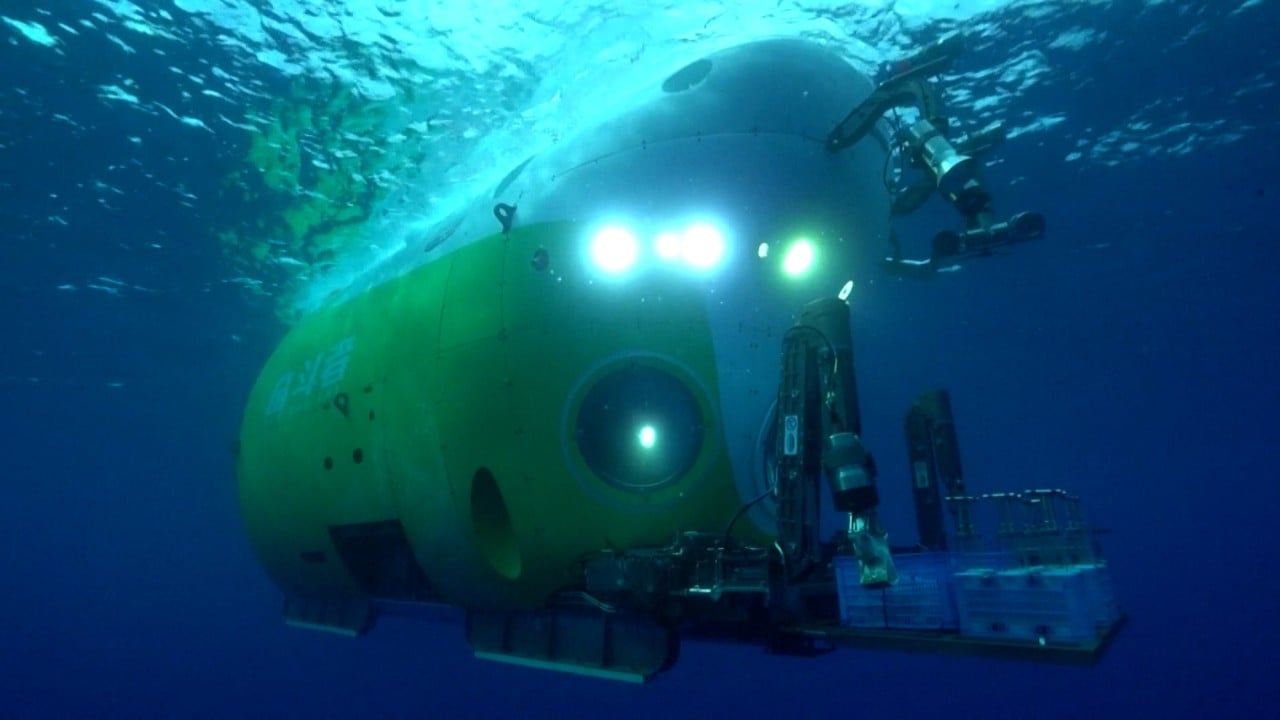
China’s Haidou 1 reaches new depths exploring the Pacific Ocean floor
- Developer says the submersible went further and stayed down longer in its quest to understand the deep sea bed
- Vessel conducted acoustic survey and beamed back pictures of the life and terrain of the Mariana Trench
An unmanned Chinese submersible has bettered its world record by diving one metre deeper into the depths of the western Pacific Ocean, according to the machine’s developer.
The dive not only improved on the world mark set by the Haidou last year, it stayed down on the sea bed for 10 hours – two hours longer than its previous longest foray on the ocean floor, according to the institute.
The Challenger Deep is the deepest area in the Mariana Trench and also the deepest known point of the Earth’s surface, with a pressure about 1,100 times that at sea level.
The institute said that part of the submersible’s mission this time was to do an acoustic survey of the area.
“For the first time in the world, Haidou 1 completed wide-range and full-coverage acoustic detection in the western depression of the Challenger Deep,” it said.
“Haidou 1 … filled gaps in scientific exploration of waters at more than 10,000 metres deep.”

02:41
Chinese manned deep-sea submersible gets rare look at deepest ocean depths, the Mariana Trench
The institute said the vessel made many trips beyond 10,000 metres to do research, proving that it could operate in a continuous, stable and reliable manner.
It said Haidou 1 was particularly strong at spotting target objects, reading the terrain of the sea bed and doing real-time live video broadcasts.
The institute also released high-definition images captured by the submersible, including pictures of ocean creatures and topography of the sea bed.


